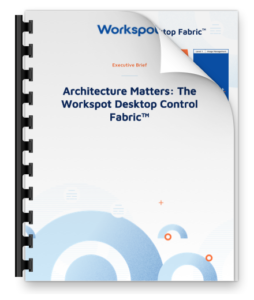Forget Everything You Know About VDI! Workspot Users Love The Performance.
This is the first blog in a series we’ll publish over the next few weeks. The goal is to illuminate the transformational aspects of moving VDI workloads to the cloud, and the essential differentiators among the options that may be helpful to understand. To take full advantage of the massive public cloud scale available to you, there’s only one path that prepares you for a multi-cloud + edge strategy in the future. It’s not legacy on-premises VDI. It’s not an MSP running legacy VDI for you. It’s not a VDI broker in the cloud. It’s Workspot. So forget everything you know about VDI, and let’s talk about the modern way to work.
IT teams have been forced to take a hard look at their current end user computing solutions. When shelter-in-place orders were issued, many organizations were ill-prepared to keep their businesses operational, let alone enable them to thrive. VDI may have already been in place in some departments, and VPNs are also being used, but both of these solutions present several serious challenges for IT, end users, and your business.
This week, let’s talk about the performance killers of traditional VDI solutions: High latency and low bandwidth.
Legacy VDI – The Productivity Killers
Before the public cloud existed, organizations used legacy, on-premises VDI to deliver virtual desktops. Most companies had one or two data centers that acted as the hub. Remote branch offices were spokes that had to connect back to the data center using expensive and slow MPLS links.
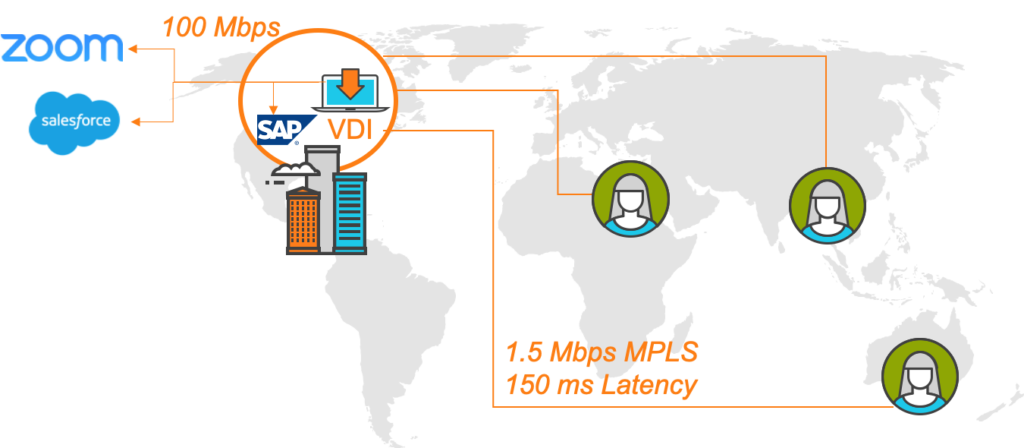
VDI was built for a single data center, creating serious performance issues and slowing productivity.
Remote VDI users connect back to their virtual desktops on slow, high-latency MPLS links. All application traffic then flows through the data center, whether it’s an on-premises application such as SAP or a SaaS application such as Salesforce. As a result, most knowledge workers hate the performance of VDI, and it has been relegated to task worker use cases, where its popularity is not much better.
Low-Latency Infrastructure Era
The data center era is over. CIOs want out of data center management so they can focus on the core competencies of their own business. Fortunately, there are hundreds of reasons to move workloads to the cloud; every company will have access to that many data centers – all over the world! This is the low-latency infrastructure era: cloud “data centers” everywhere, connected by 30Gbps network backplanes.
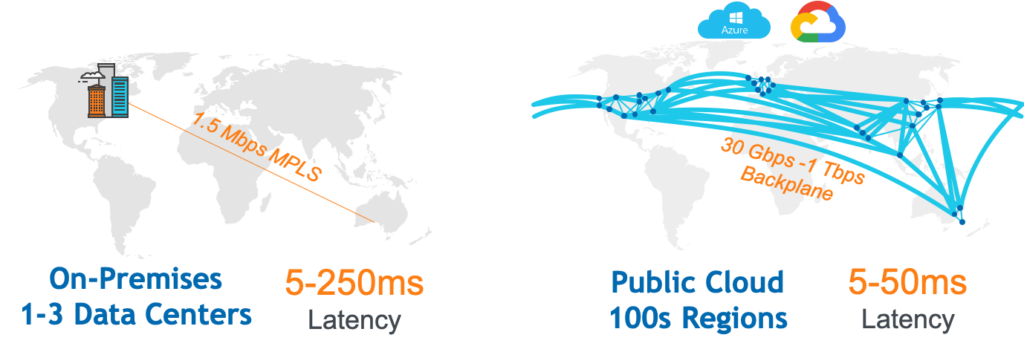
The data center era is over. Now, the low-latency infrastructure era offers massive scale and exceptional performance.
But most legacy enterprise software was written for one data center – not just VDI – also legacy databases and legacy applications. You cannot take this type of solution and duplicate it in the hundreds of public cloud regions. It’s just not scalable.
Low-Latency Cloud PCs
Workspot has set the stage for massive cloud PC scalability that is realized with just a few clicks. We are the only virtual desktop solution that separates our control plane from the customer’s data plane. This fundamental difference is what gives our customers the scalability to deploy and manage desktops in any Microsoft Azure or Google Cloud region, from a single console. Now you can place cloud PCs in the cloud region nearest every user for a low latency experience that will only go lower as edge computing use cases grow – and you need to be ready for that.
You can even have some cloud PCs on-premises for people who are close to your data center. You need this kind of flexibility to be ready for anything and to future-proof your business.
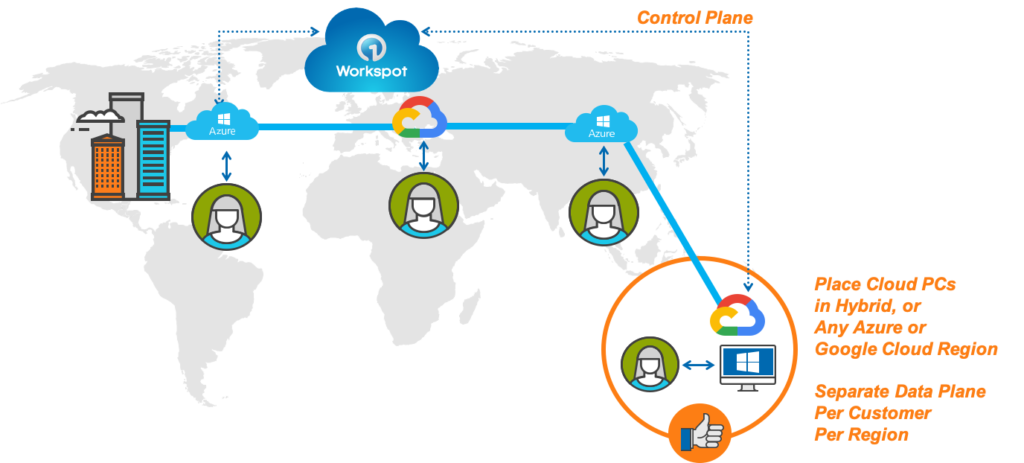
Workspot’s control/data plane separation affords customers massive cloud PC scalability across Azure and Google Cloud.
The ability to place virtual desktops into any cloud region has immense impact on the performance for end users. For example, a user in Australia can now connect to their cloud PC on a high bandwidth/low latency local network. The cloud PC running in the public cloud has high speed connectivity – we have seen 1Gbps or upwards of upload and download speeds. Network traffic to SaaS applications does not travel back to the data center anymore. It can go out directly from the cloud region. The only traffic that flows back to the data center is to access resources running there, and that access flows through very high bandwidth cloud backplanes.
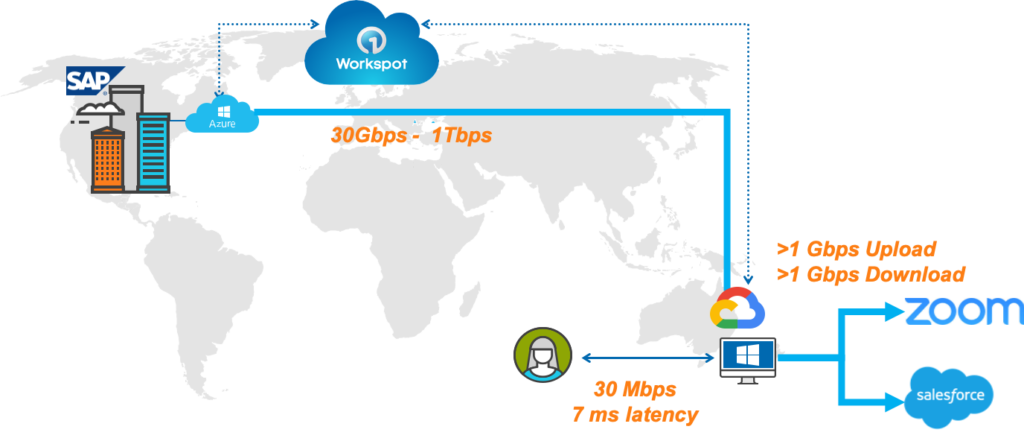
With Workspot on the public cloud, network traffic traverses high bandwidth cloud backplanes.
As a result, Workspot customers are able to move knowledge worker and high-performance use cases, such as a software developers and 3D CAD engineers, into the public cloud. This is completely transformation for organizations in Finance, AEC, Manufacturing, Life Sciences and more. One of our AEC customers, a CAD Manager, decided to run a comparison of her Workspot Cloud Workstation against her desk side workstation. Watch the video to see what she experienced!
Ready to see how it works? Schedule a demo now!
Tune in next week for our next blog in the series “Forget Everything You Know About VDI.”

